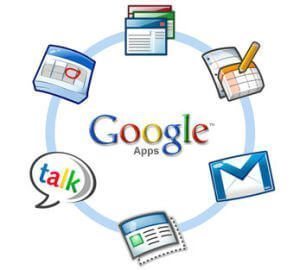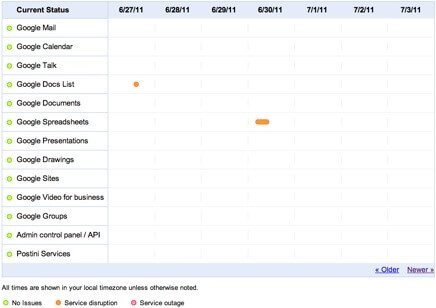 Google Apps is our favorite cloud-based email, calendar, contacts, documents (and more) solution for anyone from single users to large businesses. We’ve been helping businesses and nonprofits ditch their expensive mail servers or unreliable POP email hosting and switch to professional, reliable, business-class email for years. Of course we run Google Apps here at Computer Courage as well. It was recently revealed on Google’s official blog that 61 of the top 100 universities in the US use Google Apps!
Google Apps is our favorite cloud-based email, calendar, contacts, documents (and more) solution for anyone from single users to large businesses. We’ve been helping businesses and nonprofits ditch their expensive mail servers or unreliable POP email hosting and switch to professional, reliable, business-class email for years. Of course we run Google Apps here at Computer Courage as well. It was recently revealed on Google’s official blog that 61 of the top 100 universities in the US use Google Apps!
For those of you who don’t know what Google Apps is, it’s a cloud-based suite of tools from Google available to everyone. Think of it as your own set of Google tools – gmail, calendar, documents, and more all wrapped up under your domain name (like ours: computercourage.com). Pricing ranges from free (yes, free, up to 10 users) to $50/user/year. To you, Google Apps means affordable, reliable, powerful technology in the cloud which allows you to focus on your own business. If you want our help setting it up, just contact us.
Today I want to focus on the reliability side of Google Apps. Many business experience downtime with their email. Sometimes their in-house mail servers crash, get viruses, or run out space. Sometimes their free email provided by their web host goes down for hours, with nobody to take responsibility. Google is different. Google is far more reliable (less downtime) than any cloud service we’ve ever used, and on top of that they are far more responsive to and responsible about problems when they occur.
Uptime is Google’s specialty. According to a recent blog article, Google Apps experienced 99.984% uptime in 2010 and 99.99% uptime in the first half of 2011. That’s unreal: they go down for less than 5 minutes a month, including maintenance and upgrades. Google Apps for Business (the paid version) boasts an “SLA” or Service Level Agreement which guarantees 99.9% uptime. And when they do go down, Business users have a 1-800 number to call for support.

Google has taken uptime responsibility even a step further, offering complete transparency in their uptime and reporting on their downtime. The Google Apps Status Dashboard is available for the whole world to view, you don’t even need to log in to see it. In the dashboard, you’ll find an amazing level of detail about Google’s services. You can see an interactive calendar with a history of each service and when outages have occurred. You can see detailed notes from the engineers who practically micro-blog during outages explaining what’s going on, and how close they are to resolving the issue. An example:
8/29/11 5:30 PM- We’re experiencing an issue affecting less than 0.05% of the Google Mail user base. The affected users are unable to access Google Mail. We will provide an update by 8/29/11 6:30 PM detailing when we expect to resolve the problem. Please note that this resolution time is an estimate and may change.
8/29/11 7:00 PM – Google Mail service has already been restored for some users, and we expect a resolution for all users within the next 30 minutes. Please note this time frame is an estimate and may change.
8/29/11 8:30 PM – The problem with Google Mail should be resolved. We apologize for the inconvenience and thank you for your patience and continued support. Please rest assured that system reliability is a top priority at Google, and we are making continuous improvements to make our systems better.
Pretty impressive stuff. When I think of cloud service outages, I think of services mysteriously failing and re-appearing, of “support” without a phone number, and of companies whom I can’t even place on a continent. Google is leading the way for the refinement of service and responsibility in the new cloud era, and I’m happy to benefit from it with the peace of mind that it brings to my company every day. If you want to learn more about Google Apps, or find out if it’s right for your company, give us a call. If you have thoughts you want to share in the comments, go right ahead.